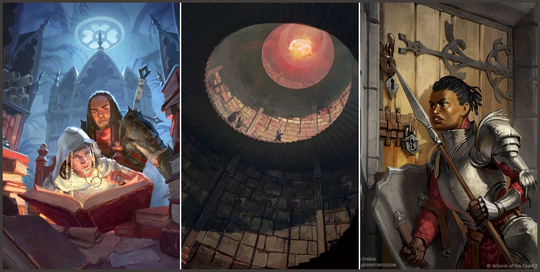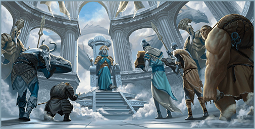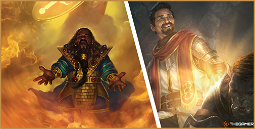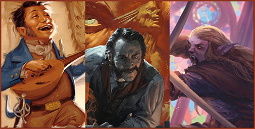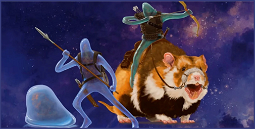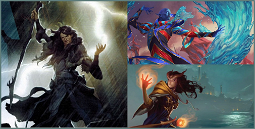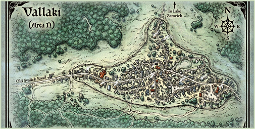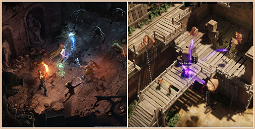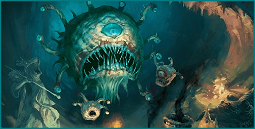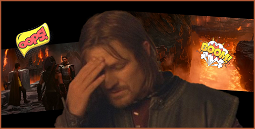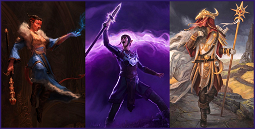Solve a puzzle to navigate a ghost ship
Searching for D&D Puzzles? Puzzle rooms, or dungeon puzzles, are a great way to mix up your tabletop campaign and offer your players a challenge. Solve a puzzle to navigate a ghost ship lost at sea, retrace your steps through a dungeon in reverse order, or chip away at a frozen tunnel while battling awakened frozen monsters.
Puzzles in Dungeons & Dragons are no mere roadblocks – they’re an opportunity to slow players down and give them a chance to think and talk things through. If your players are struggling to solve a puzzle, offer them some tips and tricks to help them on their way. Here are a few unique D&D puzzles for your next tabletop campaign.
Ghost ship puzzle
Navigate a ghost ship lost at sea by solving a series of puzzles, each of which grants you access to another area of the ship.
To start this dungeon puzzle, you need to begin with a shipwreck. Perhaps the party are exploring a coastline, or have been shipwrecked themselves. Either way, when the party encounter the remains of the ship, it’s a perfect place for a dungeon puzzle.
As the party approach the wreckage, have them make a DC 10 Wisdom (Perception) check. On a success, they see the ghostly form of the ship’s captain, beckoning them to follow. If they follow the ghost, they’ll end up in a locked room on the ship.
If they don’t make the check, they can find their way onto the deck of the ship and take a look around. They might notice that it’s full of undead and necromancy magic.
Regardless of how they get onto the ship, when they get into the locked room, they find a simple puzzle. The locked room has a pair of sliding doors, and a series of symbols on the floor. The symbols match the symbols on the key, and the party needs to arrange the symbols in the right order to unlock the door.
They’ll only have one chance to get this right. If they get it wrong, the sliding doors slam shut and lock. They’ll have to spend time trying to pick the lock, or finding another key.
The puzzle sequence is as follows:
If they get it right, the doors slide open, and they can continue their exploration. If they get it wrong, they’ll have to search for another key.
Reverse dungeon puzzle
This puzzle works best when the party have already been through the dungeon in its entirety. In that case, it’s a fun way to change things up and give the players a fresh perspective on an old location. If the players haven’t been through the dungeon yet, it’s a good way to trick them into thinking they know where they’re going.
When the party first encounter this dungeon, they’ll be able to find their way around easily. Each room is clearly signposted with its name, and the party won’t have much trouble figuring out their way around. As the party start to explore, you can slowly make things more challenging for them.
While they’re exploring, you can have a timer counting down. Give them a set amount of time to explore the dungeon, and then make everything change. Have all the markings on the walls and doors change to show the dungeon in reverse.
If they’re standing in the room they started in, it will suddenly look unfamiliar, and they’ll have to rely on their memories, and hopefully their notes, to help them find their way out.
Communicate with words and tones
A room full of traps is a great way to slow things down in your campaign, and especially good if a party has been relying on brute force to get them through every dungeon. This puzzle is also a great way to highlight just how much your party relies on magic.
Have the party find themselves trapped in a room with a series of dangerous traps. There’s no way to disable the traps, except for one – a mechanism that allows the party to disable the room from outside.
The only way to communicate with the mechanism is with words and tones. If the party can work out the right words and tones, they can send the words through the pipes, and the mechanism will let them out.
This is a fun puzzle to navigate because it requires the players to work out the right words. They’ll have to keep trying different words until they get the right combination. This puzzle relies on the party having a list of words to try. Here are some suggestions:
Once the party has selected winning words, the door opens, and they can continue with their dungeon crawl. There’s a good chance they’ll come back to this room once they’ve found the right words, so it’s worth using some of the more obscure words to make the puzzle more challenging.
Navigate a maze while changing size
For this dungeon puzzle, you’ll need a map of a simple maze. The party will find themselves in one end of the maze, and need to navigate their way to the other end. The only problem is, they keep changing size every time they pass through a marked square.
This is another great puzzle for adding a touch of comedy. The party are likely to get stuck quite quickly, and it’s fun to watch them try to figure out how to get from Point A to Point B.
Communicate through gestures and charades
Sometimes, communication is the key to solving a puzzle. Use these gestures to communicate with your fellow players.
This is a great puzzle to use if you’re looking to divide the party. You can separate the party into different rooms, or even different parts of the same room, with a spell or magical item. These rooms can be magically separated by an archway made of force, or by a secret door that leads to a separate part of the dungeon.
The party will need to use gestures and charades to communicate with each other. They can use their Intuition (Wisdom) checks to try and work out what the other party is trying to say.
